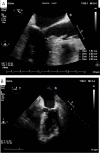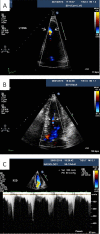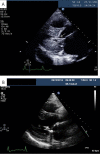Surgical management of left ventricular outflow obstruction in hypertrophic cardiomyopathy
- PMID: 26693330
- PMCID: PMC4676463
- DOI: 10.1530/ERP-15-0005
Surgical management of left ventricular outflow obstruction in hypertrophic cardiomyopathy
Abstract
Hypertrophic cardiomyopathy is the single most common form of inherited heart disease. Left ventricular outflow tract obstruction (LVOTO) is a recognised feature of this condition which arises when blood leaving the outflow tract is impeded by systolic anterior motion of the mitral valve. In an important minority of patients, breathlessness, chest pain and syncope may result and persist despite the use of medications. In suitable candidates, surgery may relieve obstruction and its associated symptoms, and normalise life expectancy. Refinements in surgical techniques have marked improvements in the understanding of mechanisms underlying LVOTO. In this review, we hope to provide the reader with an understanding of how contemporary surgical practice has developed, which patients should be considered for surgery, and what results are anticipated. The role echocardiography plays in this area is highlighted throughout.
Keywords: hypertrophic cardiomyopathy; left ventricular outflow tract obstruction; myectomy.
Figures







References
-
- Nagueh SF Bierig SM Budoff MJ Desai M Dilsizian V Eidem B Goldstein SA Hung J Maron MS Ommen SR et al. American Society of Echocardiography clinical recommendations for multimodality cardiovascular imaging of patients with hypertrophic cardiomyopathy: endorsed by the American Society of Nuclear Cardiology, Society for Cardiovascular Magnetic Resonance, and Society of Cardiovascular Computed Tomography Journal of the American Society of Echocardiography 24 2011. 473–498.10.1016/j.echo.2011.03.006 - DOI - PubMed
-
- Cleland WP The surgical management of obstructive cardiomyopathy Journal of Cardiovascular Surgery 4 1963. 489–491. - PubMed
-
- Cooley DA Bloodwell RD Hallman GL LaSorte AF Leachman RD Chapman DW Surgical treatment of muscular subaortic stenosis. Results from septectomy in twenty-six patients Circulation 35: 4 Suppl 1967. I124–I132. - PubMed
Publication types
LinkOut - more resources
Full Text Sources

